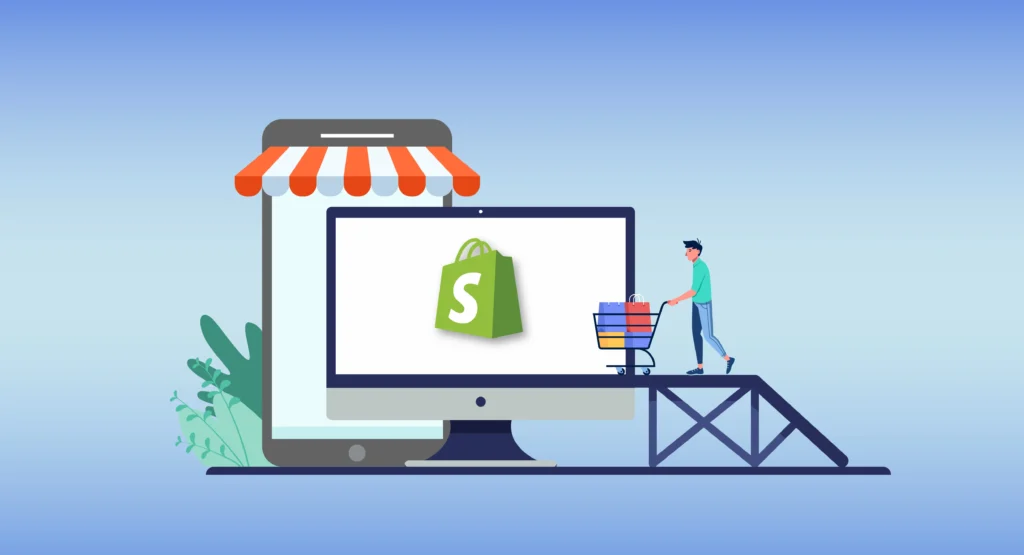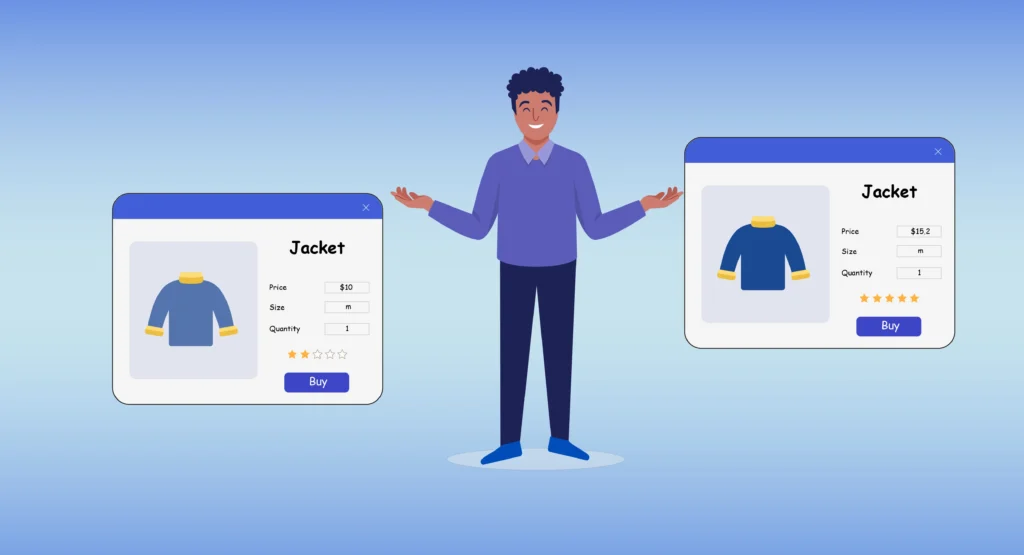
Table of Contents
Creating a stunning Shopify store is crucial to drawing in and keeping clients. A visually appealing and user-friendly online store not only enhances the shopping experience but also boosts conversions and sales. This guide provides tips and techniques for designing a stunning Shopify store that reflects your brand and meets your business goals.
Importance of a Well-Designed Store
For multiple reasons, having a well-designed Shopify store is essential.
First Impressions Matter
The design of your store is the first thing customers notice. A professional and appealing design can create a positive impression and set the tone for the shopping experience. In the competitive e-commerce market, first impressions can be the difference between a potential sale and a lost customer.
User Experience
Good design improves navigation and usability, making it easier for customers to find what they’re looking for. A seamless user experience not only keeps visitors on your site longer but also increases the likelihood of them completing a purchase. Intuitive navigation, clear call-to-action buttons, and a logical layout all contribute to a positive user experience.
Brand Trust
A polished and consistent design builds trust with your audience. Customers are more likely to purchase from a store that looks professional and reliable. Consistency in design elements, such as colors, fonts, and imagery, reinforces your brand’s identity and makes your store memorable.
Increased Sales
An intuitive and visually pleasing store encourages customers to stay longer and make purchases. The easier it is for customers to find and buy products, the higher your conversion rates will be. Investing in good design can significantly impact your bottom line.
Understanding Your Brand Identity
It’s critical to grasp your brand identity clearly before beginning the design process. Your brand identity encompasses your logo, color scheme, typography, and overall style. It reflects your business’s personality and values, helping you connect with your target audience.
Key Points to Consider
- Brand Colors: Choose colors that resonate with your brand and appeal to your target audience. Colors evoke emotions and can influence perceptions, so select a palette that aligns with your brand’s message.
- Typography: Select fonts that are easy to read and align with your brand’s tone. Typography should enhance readability and complement your overall design.
- Logo: Ensure your logo is high-quality and prominently displayed. Your logo is a visual anchor for your brand and should be easily recognizable.

Choosing the Right Shopify Theme
Shopify offers a wide range of themes, both free and paid, that can serve as the foundation for your store’s design. When selecting a theme, consider the following:
Relevance
Select a theme that complements your line of work and offerings. The theme should support the type of products you sell and the way you want to present them.
Responsiveness
Make sure the theme displays well and is responsive across all platforms. With a significant portion of shoppers using mobile devices, a responsive design is crucial for providing a seamless experience across different screen sizes.
Customization Options
Look for themes that offer flexibility and customization features. The ability to tailor the theme to your specific needs can make a big difference in achieving the desired look and functionality.
Recommended Themes
- Debut: Great for beginners, with clean design and easy customization.
- Brooklyn: Ideal for apparel stores, featuring a modern and stylish layout.
- Minimal: Perfect for showcasing products with a simple and elegant design.

Customizing Your Shopify Theme
Customization is the next step after choosing a theme. You can adjust the theme’s design to suit the distinct personality of your business.
Customization Tips
- Homepage Layout: Customize the homepage to highlight key products, promotions, and calls to action. A well-designed homepage can capture visitors’ interest and guide them to important sections of your store.
- Navigation: Simplify the navigation menu to ensure easy access to different sections of your store. Clear and concise navigation helps customers find what they’re looking for quickly.
- Colors and Fonts: Adjust the color scheme and typography to match your brand’s style. Consistent use of colors and fonts creates a cohesive look across your site.
- Imagery: Use high-quality images that resonate with your brand and products. High-quality images can greatly improve your store’s aesthetic appeal.

Designing a User-Friendly Layout
A user-friendly layout is essential for providing a seamless shopping experience.
Key Elements of a User-Friendly Layout
- Clear Navigation: Make use of an easy-to-understand navigation menu. Customers should be able to find their way around your store without confusion.
- Search Functionality: Ensure the search bar is easily accessible and functional. A robust search feature can help customers find products quickly.
- Product Categories: Sort goods into categories to make browsing easier. Well-defined categories make it easier for customers to locate the products they need.
- Call to Action: Incorporate visually striking call-to-action buttons. Effective CTAs guide customers towards making a purchase.
Optimizing for Mobile and Desktop
It’s critical to optimize your store for desktop and mobile users, as a considerable portion of your customers use mobile devices.
Mobile Optimization Tips
- Responsive Design: Ensure your theme is responsive and adjusts to different screen sizes. A responsive design provides a consistent experience across all devices.
- Fast Loading Times: Optimize images and use efficient coding to improve loading times. Slow loading times can lead to high bounce rates, so ensure your site loads quickly.
- Mobile-Friendly Navigation: Simplify the navigation menu for smaller screens. A mobile-friendly layout should be easy to navigate with touch controls.

Enhancing Visual Appeal
Having an eye-catching design is essential to drawing in and keeping clients.
Ways to Enhance Visual Appeal
- High-Quality Images: Use professional images for products and banners. High-quality visuals can make your products more attractive and enticing to customers.
- Consistent Branding: Maintain a consistent color scheme and style across all pages. Maintaining consistency in your brand identity and retail appearance is crucial.
- Visual Hierarchy: Utilize positioning, color, and size to draw the viewer’s eye. Effective use of visual hierarchy helps highlight important elements on your page.

Adding Essential Features
Incorporate essential features to improve functionality and user experience.
Must-Have Features
- Shopping Cart: Ensure the shopping cart is easy to access and use. A well-designed cart can streamline the checkout process.
- Wishlist: Allow customers to save products for future purchases. Wishlists can encourage repeat visits and purchases.
- Customer Reviews: Display customer reviews to build trust and credibility. Reviews provide social proof and can influence buying decisions.
- Live Chat: Provide real-time customer support with live chat functionality. Live chat can help address customer queries instantly, improving satisfaction.
Testing and Launching Your Store
Before launching your store, conduct thorough testing to ensure everything works smoothly.
Testing Checklist
- Functionality: Test all links, forms, and features to ensure they work correctly. Broken links or non-functional features can frustrate customers.
- Compatibility: Check the store’s compatibility across different browsers and devices. Your site should perform well on all major browsers and devices.
- Performance: Test the loading speed and overall performance of your store. A fast and responsive store provides a better user experience.
Once testing is complete, you can confidently launch your store and start promoting it to attract customers.
Post-Launch Maintenance and Updates
After launching your store, regular maintenance and updates are essential to keep it running smoothly.
Maintenance Tips
- Regular Updates: Keep your theme, apps, and Shopify platform updated. Updates on a regular basis can enhance performance and security.
- Performance Monitoring: Make use of analytics tools to track performance and pinpoint areas in need of development. Analyzing data can help you make informed decisions.
- Customer Feedback: Collect and act on customer feedback to enhance the shopping experience. Customer insights can guide improvements and innovations.
- Security Checks: Regularly check for security vulnerabilities and update security measures. Protecting customer data is paramount to maintaining trust.
Conclusion
Designing a beautiful and functional Shopify store involves understanding your brand, choosing the right theme, customizing it to reflect your identity, and optimizing for a seamless user experience. By following these tips and techniques, you can create an online store that not only attracts customers but also drives sales and fosters loyalty.
FAQs
Why is a well-designed Shopify store important?
A well-designed Shopify store creates a positive first impression, improves user experience, builds trust, and increases sales by making it easy for customers to navigate and purchase products.
How can I pick the ideal Shopify theme for my online store?
When choosing a theme, take into account your company identity, product offerings, and industry. Ensure it is responsive, customizable, and aligns with your business goals.
What are some essential features to add to my Shopify store?
Essential features include a shopping cart, wishlist, customer reviews, and live chat functionality. These features enhance the user experience and encourage purchases.
How can I make my Shopify store mobile-friendly?
Use a responsive theme, optimize images for faster loading, and simplify the navigation menu to ensure a seamless shopping experience on mobile devices.
What should I do after launching my Shopify store?
Regularly update your theme and apps, monitor performance with analytics tools, collect customer feedback, and conduct security checks to maintain and improve your store.
